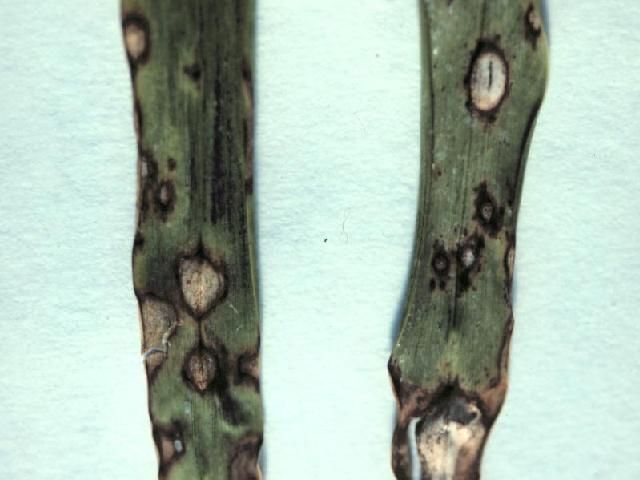Gray Leaf Spot
Central Florida Gray Leaf Spot Control Specialists
Gray Leaf Spot
Pathogen: Pyricularia grisea
Turfgrasses Affected:
St. Augustine grass
Turfgrasses Affected:
St. Augustine grass
Occurrence:
This disease is most often observed from late spring to early fall, especially during prolonged periods of rainfall. Excessive applications of quick-release nitrogen sources enhance disease severity as does compacted soil. Application of the herbicide atrazine increases the susceptibility of St. Augustine grass to this disease.
Occurrence:
This disease is most often observed from late spring to early fall, especially during prolonged periods of rainfall. Excessive applications of quick-release nitrogen sources enhance disease severity as does compacted soil. Application of the herbicide atrazine increases the susceptibility of St. Augustine grass to this disease.

spot symptoms of Gray Leaf Spot on St. Augustinegrass. http://edis.ifas.ufl.edu/LyraEDISServlet?command=getImageDetail&image_soid=FIGURE%203&document_soid=LH047&document_version=1

Severe Gray Leaf Spot symptoms. Note leaf tip die back.
Many spots can occur on a single leaf, such that severely affected leaves wither and turn brown. No distinct patches are observed, but areas may appear thin. A severely affected turfgrass area may appear as though it is suffering from drought.
Once St. Augustinegrass is established in the landscape, the disease is chronic but not severe. During the summer months, individual St. Augustinegrass plants will always have a few spots on the leaf blades, but the overall health of the turfgrass is not affected unless the grass is placed under severe stress.
Request Service
Request a Free Estimate
Fill out the form below. This form will take less than a minute to complete.
* indicates required fields
